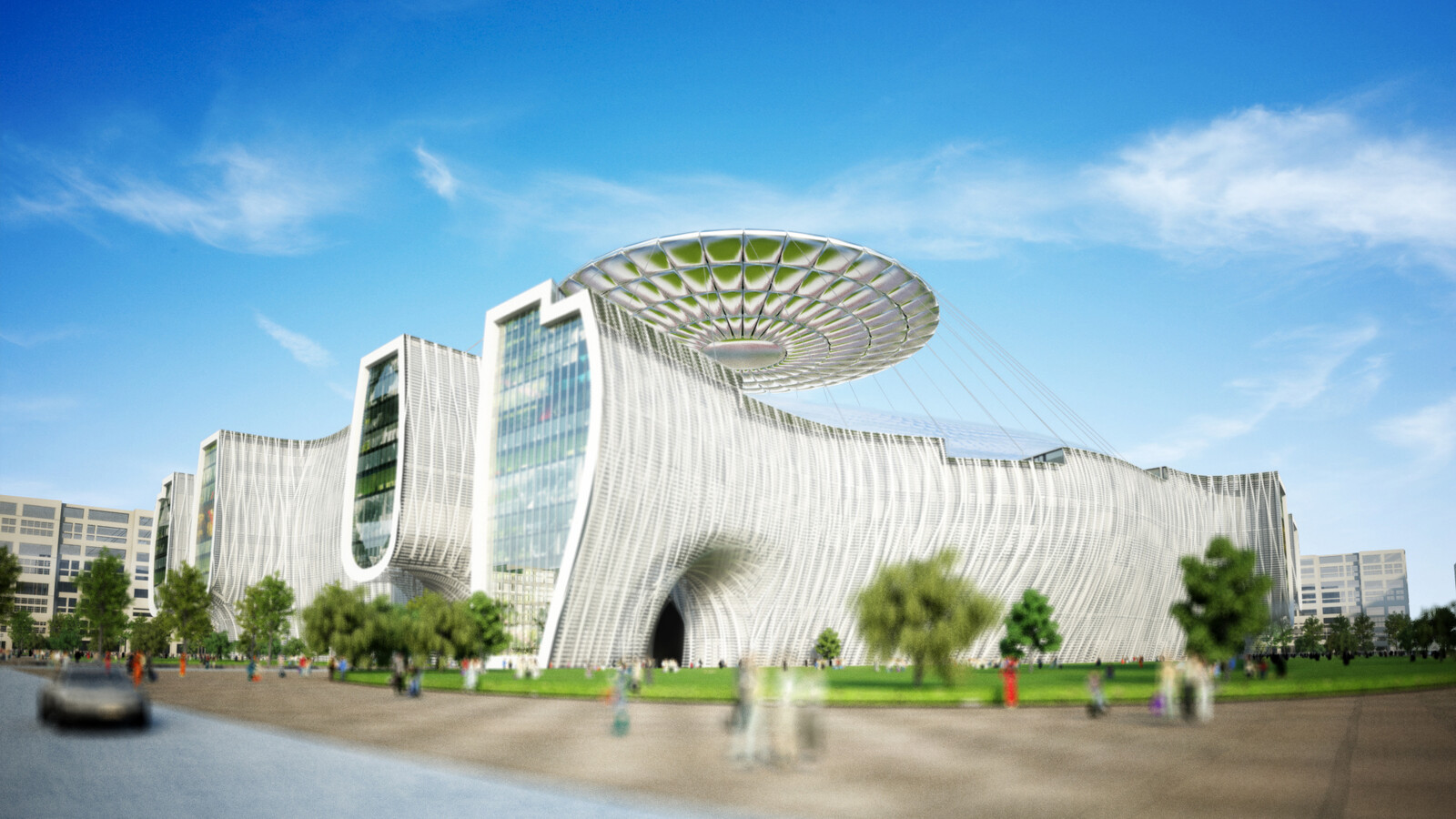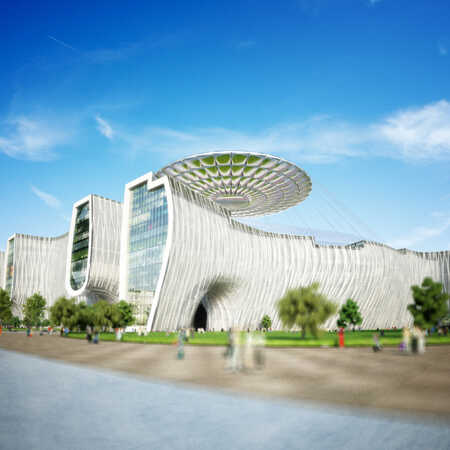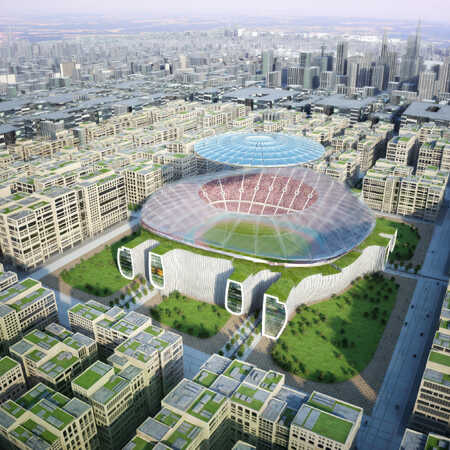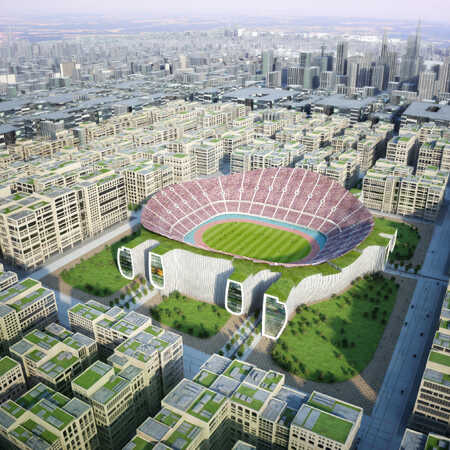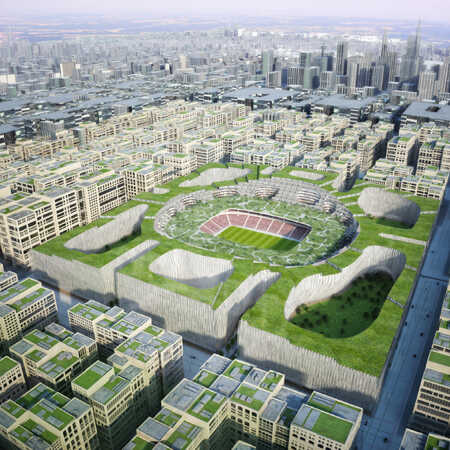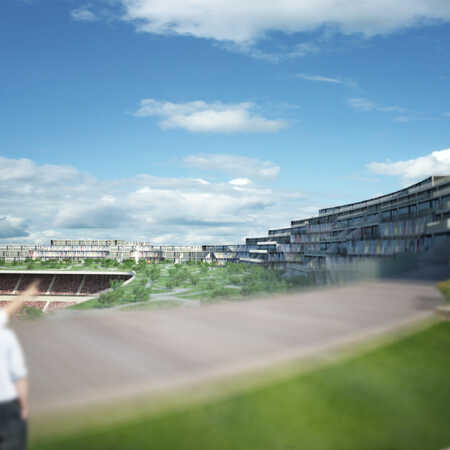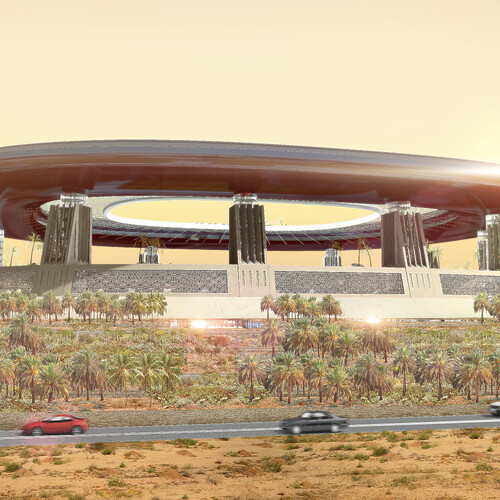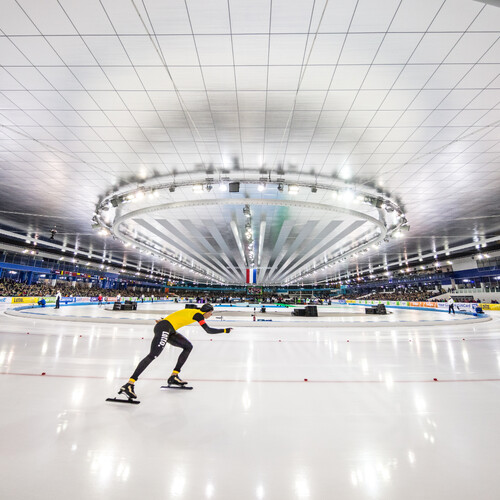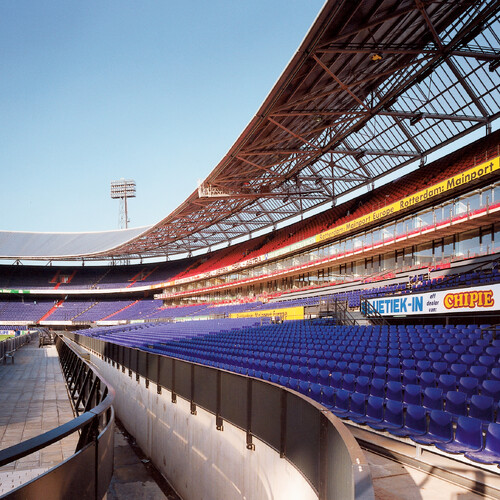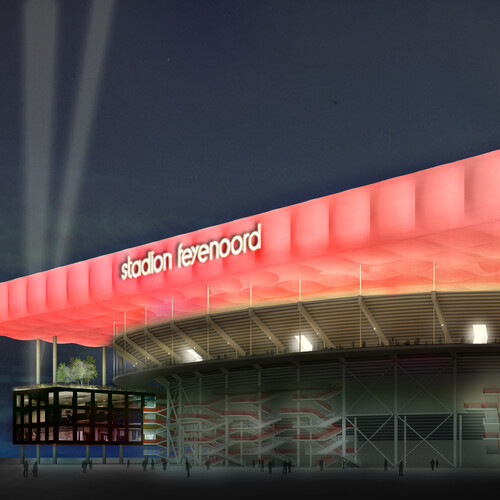White elephants
We all know the images of derelict Olympic stadiums, in Greece, Russia and Brazil. Whole neighborhoods were torn down, hundreds of millions spent and now overrun, rusting white elephants are stacking up debts. Too expensive to tear down. That is an inefficient way to design and build stadiums. That can be done much better.
A difficult type of building
An ideal stadium is first and foremost a sports facility that allows large crowds of spectators to arrive and park their car, offers pleasant seating and caters for all sorts of comfort such as food and drinks, restrooms, broadband internet and entertainment apart from the game itself. This all together with an optimal view of the playing field, bright lighting and good acoustics.
Being a complex structure that has to meet high quality standards and is only used infrequently but then very intensively, a stadium is a difficult type of building. To finance, to operate and to outfit with the right infrastructure. That is the reason why for a long time stadiums were built outside the cities, on cheap land, close to motorways and surrounded by discount malls. That is far from ideal. It is inefficient and leaves the potential that a stadium can offer the city and its residents largely unused.
What does an ideal stadium look like?
Designed in three rings around the pitch, one could think of a scalable stadium, that by disconnecting the three rings could house new functions like offices, schools and health clubs. The huge surface of the roof and the capacity to collect rainwater make it possible to generate energy and supply cooling. This for the stadium itself, but later also for the neighborhood. The architectural studio ZJA includes geothermic installations in their design, the storage of heat and energy in groundwater and batteries and the use of CO2 absorbing materials to turn a stadium into a driving force behind the energy transition of a neighborhood. It also increases the economic value of the stadium after its use as venue at maximum capacity.
Sports and the city
Stadiums that are built for national and international tournaments and competitions can be designed as multifaceted elements of a compact city. That requires a design in which the changing needs and developments in an urban area together with its residents set the frame to fit the stadium at its best. That way the stadium becomes part of the evolution of the city, consisting of elements that are meant to have alternate functions through time: from training facilities to daycare center, from offices to libraries or residencies, from sports field to park, square or urban farm. A stadium can be built in such a way that it can convert into a modest sports center, in a residential area with a park, shops and a theatre. But it could also dissolve into the city and become an infrastructural hub with large public buildings and offices. That demands a way of thinking about a stadium as an assemblage of buildings that form a functional whole and later, all on their own become part of the surrounding city.
The design by architects ZJA for an ideal stadium has to differ everywhere, because it will always be part of an infrastructural plan for the city, of the strategy to make the necessary energy transition, and of the plans for building residencies, schools, cultural and recreational facilities and the economic development of the city. And, apart from technical, urban and economic reasons there is another reason to think about stadiums like this: stadiums brings people together, sports provide social cohesion and offer opportunities to further public health. The ideal stadium is such a flexible design that it can link this potential to the immediate surroundings, to the visitors and residents. This way a whole city can benefit from a stadium.
Architect: ZJA
Research project: 2005
Project: #586
